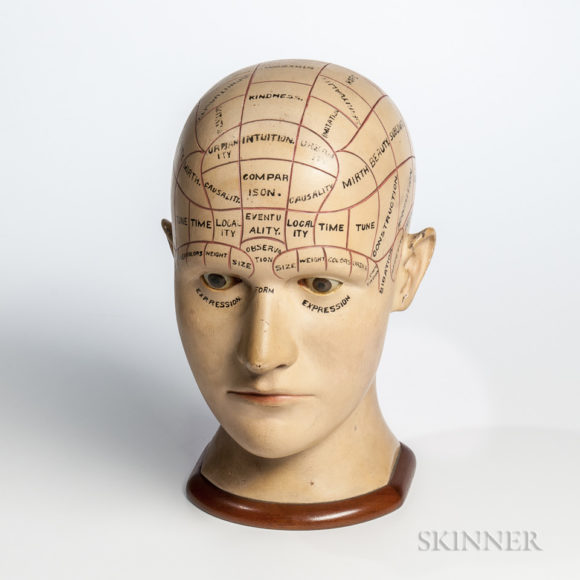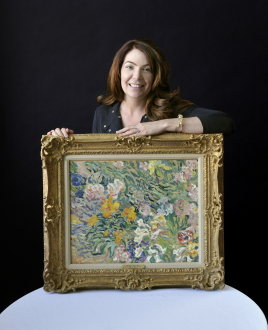CT scans, MRIs, laser treatments, robotic surgery: Modern medicine offers so many near-miraculous and sometimes mysterious ways to diagnose and treat “whatever ails us.” But these are just the latest chapters in the ages-old pursuit of health. That quest has left a legacy of medical antiques and collectibles that are sometimes beautiful, intriguing, even useful — and occasionally valuable.
Starting at the top, various models of the human head were once widely used to study a variety of conditions. The 19th century pseudoscience called phrenology, literally “mind science,” interpreted the shape and size of a person’s head as an indication of character, thoughts, emotions and mental abilities. Phrenology heads made of wood, plaster, ceramics or papier-mâché were carefully labeled to show the supposed meaning of every bump, such as kindness, sense of humor, etc.
Other model heads include craniometers, for precise measurement of the various features of the skull, and medical teaching heads. These life-size, anatomically correct objects were designed to be taken apart and reassembled by medical students.
Another antique head trip was the rectifier or rectificateur, an early 20th century metal device meant to be strapped on the face to rectify or realign a broken or misshapen nose. One popular model was the French, gold-plated “Nice-nose,” with a hefty original price tag of $12 ($200 or more in today’s currency).
The actual medicines used by earlier generations have rarely survived and don’t generally have much value except as curiosities. However, information about them in the form of books such as herbals, or the containers that held these remedies, can be highly collectible.
Before prepackaged medications came from the chain drugstore or the mail-order pharmacy, people got their pills and potions from the doctor himself, or the apothecary store. Large display containers made of ceramics or glass had their contents impressively labeled in Latin. Some had hand-painted scenes that were in effect advertisements for the particular remedy.
A wide variety of medical equipment used by doctors in the treatment of their patients has survived. Some are notable for their weirdness by today’s standards — storage containers for leeches used for various medical treatments since the days of ancient Egypt; (leeches are still occasionally used medically today in certain surgical procedures); 18th and 19th century metal bleeding bowls marked like measuring cups to monitor the volume of blood being removed; primitive surgical tools made of flint or obsidian.
Among the most-collected medical antiques is the equipment employed by Civil War military doctors. The huge numbers of wounded spurred significant advances in treatment and care, especially innovations in surgery. Rapidly industrializing production methods led to considerable improvements in the quality and quantity of instruments. Since many physicians entered the war bringing their own equipment with them, entire surgical sets have survived, as have the names of their owners.
Health care is one of the most dynamic, rapidly changing sectors of modern life. The items it has left behind are often as fascinating as the future of medical science.
For more, contact Katie at kwhittle@skinnerinc.com or 212-787-1114.


